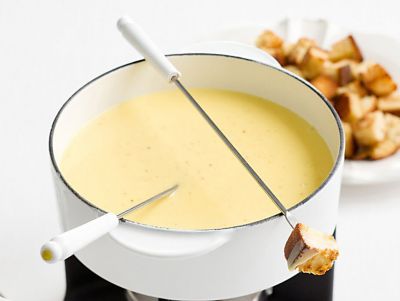The Valle d’Aosta region is arguably the best representation of the beauty of the Italian Alps. Within this region, visitors are graced with spectacular views of the “giants of the Alps:” the tallest mountain in the Alps, Mont Blanc, rising 15,777 ft. above sea level, Monte Rosa (15,203 ft.), the second highest mountain in the Alps, Mount Cervino at 14,692 ft. with its characteristic pyramidal shape, and the Gran Paradiso with an elevation of 6,165 ft.
Valle d’Aosta shares a border with Switzerland to the North, France to the West and Piedmont to the South and East. It is an excellent destination for lovers of majestic peaks and winter sports, but it shines with magical colors even in spring and summer.
The smallest region of Italy, it is rich in beautiful traditions and each of its valleys zealously preserves its own. There are numerous myths, legends and folktales of local heroes, ghosts and witches. Some tell the birth and magical transformation of mountains, lakes, plants, and flowers. Others talk of faith and saints.
In this setting of stately mountains and diverse valleys sits the Gran Paradiso National Park, where it is still possible to see animals in their natural habitat: ibex, chamois, eagles, and marmots live in vegetation that changes according to the surrounding environment.
Cows are of great importance in this region because their milk is used to produce culinary products that are the base of the Valdostan cuisine. The area’s famous fontina cheese is made with the Valdostana Pezzata Rossa cows’ milk, the only breed that produces in such harsh weather conditions and that is fed with fodder and local herbs. Fontina is the foundation of the fonduta, a typical dish of the region.
The cows of the Valdostana Pezzata Nera and Valdostana Pezzata Castana breeds are very active cows with an aggressive temperament, which is why they are used in the fights of the “Bataille de Reines,” used to establish the hierarchy inside the herd.
In the hamlet of Hône, in the lower Valle d’Aosta, the Micòoula festival honors the local sweet bread. The celebrated rye bread differs from others because its dough contains walnuts, chestnuts, dried figs, raisins, and chocolate. In the local dialect, the name Micòoula means “special bread." The origins of this festival date back to the Middle Ages when the ancient Micòoula bread was made with chestnuts characteristic of the Champorcher valley. Over time, the recipe has been enriched with other ingredients to become a dessert typical of special holidays like Christmas. The main festival still takes place on December 8. During this celebration, the residents of Hône teach visitors how to make and bake the dough by holding practical demonstrations in the main square.
Valle d’Aosta may be the smallest region in Italy, but it surely has great sights and flavors!
https://www.lagazzettaitaliana.com/travel/9040-valle-d-aosta-and-its-sights-and-flavors#sigProId88ae7a38b9
La Valle d’Aosta e i suoi sapori
Durante questo periodo invernale, vorrei parlarvi delle Alpi ed in particolare della regione Valle d’Aosta, che rappresenta al meglio la bellezza delle nostre Alpi. La sua posizione infatti le conferisce un panorama mozzafiato da cui è facile riconoscere i "Giganti delle Alpi"; il Monte Bianco (4.810 m), montagna scolpita nel granito e seconda in Europa solo all'Elbrus, del Caucaso; il Monte Cervino (4.478 m), dalla caratteristica forma piramidale; il Monte Rosa (4.634 m), seconda montagna delle Alpi per altezza; il Gran Paradiso con un’altezza di 4.061 m.
La Valle d’Aosta è una piccola regione che confina con la Svizzera a Nord, la Francia ad Ovest ed il Piemonte a Sud ed Est. È un’ottima meta per chi ama la i picchi alpini e gli sport invernali, ma risplende di colori magici anche in primavera e in estate.
La più piccola regione d’Italia è ricca di bellissime tradizioni ed ogni valle conserva gelosamente le proprie. Ci sono numerosi miti o leggende e storie della tradizione popolare che narrano di eroi, fantasmi, streghe e di Santi. Alcune di esse avvolgono in un’aura di fantasia la nascita e la trasformazione di montagne, laghi, piante e fiori. Altre hanno come tema la fede e narrano le storie di alcuni Santi.
In questa cornice di imponenti montagne e valli diverse si trova il Parco Nazionale del Gran Paradiso, dove si possono ammirare nel loro ambiente naturale cervi, stambecchi, caprioli, volpi, marmotte, lepri. Etc. Le mucche però, sono gli animali che ricoprono una grande importanza in questa regione. Dal loro latte, infatti, si possono ricavare i prodotti culinari che sono alla base della cucina valdostana come la fontina, noto formaggio DOP, che viene prodotto solo dal latte delle mucche di razza Valdostana Pezzata Rossa, le uniche che riescano a produrre nelle condizioni di freddo dolomitico e che sono nutrite con i foraggi e le erbe locali. La fontina è alla base della fonduta un piatto tipico della regione.
Le mucche delle razze Valdostana Pezzata Nera e Valdostana Pezzata Castana, sono molto attive e hanno un temperamento aggressivo. Per questo motivo vengono utilizzate nei combattimenti che si possono ammirare nella “Bataille de Reines” che serve a stabilire la gerarchia all’interno della mandria.
Nel Borgo di Hône nella bassa Valle d’Aosta si celebra la festa della Micòoula, una festa dedicata ad un tipo di pane dolce locale a base di segale e che si differenzia da altri normale perché contiene nel suo impasto noci, castagne, fichi secchi, uva passita e cioccolato. Nel dialetto locale il nome Micòoula significa infatti pane speciale. Le origini di questa festa risalgono al Medioevo, quando, infatti, la Micòoula, era l’antico pane con le castagne tipico della vallata di Champorcher. Con il tempo la ricetta si è arricchita di altri ingredienti fino a diventare un dolce tipico delle feste come il Natale. La festa principale però resta sempre l’8 di dicembre. Durante questa giornata gli abitanti di Hône insegnano l’impasto e la cottura del pane con dimostrazioni in piazza.
Sebbene la Valle d’Aosta sia la regione più piccola d’Italia, i suoi sapori sono grandi!




